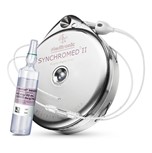Tone Management and Medical Interventions to Decrease Muscle Tone
Michelle L. Lange, OTR/L, ABDA, ATP/SMS
This blog is part 5 of a series on Muscle Tone. Many medical interventions can impact wheelchair positioning for clients with increased muscle tone. This includes tone reduction medications, injections, surgeries, and orthotics. Some interventions provide a temporary impact which makes seating recommendations challenging as appropriate support is required whether the tone management strategies are on board or not.
A number of oral medications are used to provide a global impact on muscle tone. These medications can also be administered via a gastrostomy. As medications take time to build-up in the client’s system and may wear off before the next dose, the effects may not be consistent throughout the day. Side effects are common and include sleepiness and lowering of the seizure threshold. Examples include Baclofen, Tizanidine, and Diazepam. These medications may reduce overall extension within the seating system, though may also lead to lower tone in the trunk and neck, affecting postural control.
Many medical interventions can impact wheelchair positioning for clients with increased muscle tone.
Injections are used to provide a more targeted impact on muscle tone. Phenol injections temporarily destroy part of a motor nerve, which will eventually grow back. Botox injections temporarily destroy certain muscle receptors in the muscle belly. These muscle receptors will also grow back and, over time, both types of injections become less effective. By targeting a specific body area, such as the hip adductors or hamstrings, positioning this body area within a wheelchair seating system may change. For example, the client may be able to tolerate a different seat to back angle. While the effect of the injections persists, resulting in decreased muscle tone in that area of the body, surrounding areas may ‘relax’ and opposing muscle groups may have the opportunity to strengthen for more long-term benefit.
Surgeries
Tendon releases or lengthenings are designed to increase passive range of motion and often result in a reduction of active muscle tone. Common tendon releases in clients with increased muscle tone include hamstrings, adductors, and heelcords. Once the client has more available range, the seating system may need to be modified.
Hip osteotomies are generally performed as the hip socket is shallow in clients who have never borne weight through this joint, particularly through ambulation. In people with increased muscle tone, tight muscles impact bony growth and can lead to rotation of the femur, which rotates the ball of hip joint away from this already shallow socket (see this blog). Many hip osteotomies also derotate the femur (i.e. varus derotational osteotomy or VDRO). While this surgery does not tend to reduce muscle tone, it is common in people who have increased muscle tone. This joint will now be more stable. In terms of seating, the hip width may be increased, and an apparent leg length discrepancy is common post-surgery. This will need to be addressed within the wheelchair seating system.
Spinal fusions are also not designed to reduce muscle tone but are common in clients who develop spinal asymmetries secondary to increased muscle tone (see this blog). Pre-surgery, this client is likely to have a molded seating system to accommodate current asymmetries and limit ongoing changes. Post-surgery, this back will no longer match the client’s trunk height or shape and will need to be replaced. Less postural support may be required from the wheelchair seating system, as the spine is now fused and stable.

Medtronic
In a dorsal rhizotomy, selective dorsal roots are cut where they emerge at the base of the spinal column. This primarily affects the lower extremities, as a reduced amount of motor impulses are received by the muscles. As the lower extremities relax, overflow may be seen in other parts of the body. Some newer procedures are completed at the cervical area and have a greater impact on the upper extremities. These are permanent procedures.
Finally, the Baclofen Intrathecal Pump has been used for many years to reduce muscle tone in people with a wide range of diagnoses. A hockey puck sized pump is placed in the abdomen and a catheter leads from the pump to the lower spinal cord area. The results tend to be global, though may be greater below the level of insertion. In comparison with oral Baclofen, less medication is required for the same results – reducing side effects.
Orthotics
Orthotics are commonly used by people with increased muscle tone to reduce risk of loss of range as well as orthopedic changes. Ankle Foot Orthoses (AFOs) keep the ankle flexed to approximately 90 degrees, which can inhibit extension throughout the lower extremity. Thoracolumbar sacral orthoses (TLSOs) are worn on the trunk to keep the spine symmetrical. These also provide a great deal of trunk support, which reduces the amount of postural support required of the wheelchair seating system.
In our next blog in this series, we will address general seating interventions which can be helpful when working with someone who has increased muscle tone. Finally, we will discuss how Dynamic Seating can be used in conjunction with these strategies to achieve and maintain an optimal position in these circumstances.
For more information, check out our CEU Course on this topic here!
